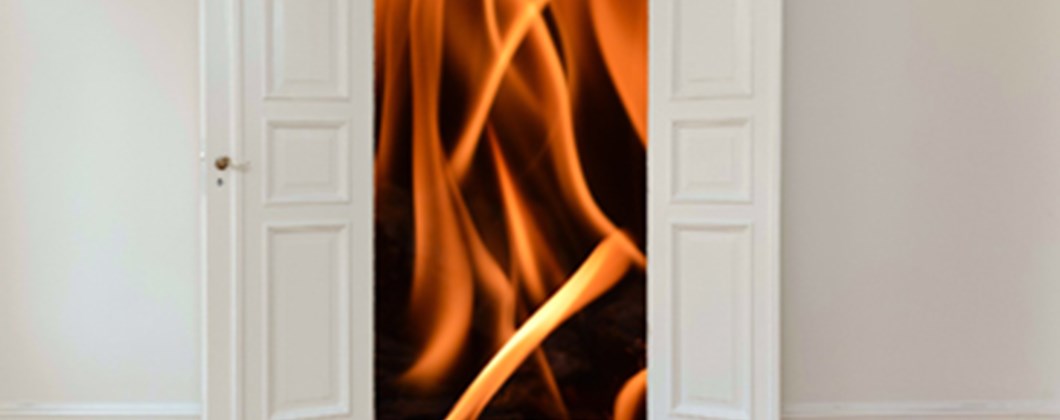Top 4 Most Asked Questions About Fire Doors

We are regularly asked questions about fire doors and how they affect insurance for flats, so we have put together our top 4 most asked questions and answered them for you:
1. How Do Fire Doors Work?
Good question. Fire doors are designed to reduce spreading fire, smoke and toxic fumes within a building. They are made up of various components, including:
• The door itself usually has a solid core construction which can include: particleboard, chipboard, flaxboard and solid timber.
• It is usually 45mm thick, as opposed to the standard door thickness of 35 mm.
• An intumescent seal is fitted either within the door frame or grooved into the door edge. When temperatures reach 200°C or more, it will expand to seal the gaps between the door and frame.
• All fire door hardware, including locks, latches, hinges, must be fire rated.
• Fire doors must have an automatic closing device: while it must permit the flow of traffic during everyday use it must self-close in the event of a fire.
2. Do Front Doors Need To Be Fire Doors?
Yes. Front doors to flats need to be fire resistant and self-closing. They need to be fire resistant for 30 minutes and must be fitted with smoke seals, fire-retardant strips and a self-closing mechanism.
3. Who Checks Fire Doors?
The Fire Safety Order came into force in October 2006 and outlines the fire regulations for flats. It requires a designated responsible person to carry out a fire risk assessment and take steps to reduce or remove the risk of fire. This doesn’t have to be carried out by external specialists but freeholders, landlords and managing agents tend to use ‘fire risk assessors’ to carry out their fire risk assessments. Regardless of who carries it out the assessment, the responsible person will be liable to prosecution if, as a result of an inadequate fire risk assessment, people are placed at the risk of death or serious injury in case of fire. Equally, anyone carrying out the fire risk assessment for the responsible person has the same liability.
Fire risk assessments for flats must include the individual front doors. They will check that the door frame material and its section sizes comply with the required standards. Additionally, essential hardware (ironmongery) must also have its’ own individual test evidence to show fitness for purpose.
4 How Do I Check Fire Doors Are Safe?
There are some simple steps you can take to check if fire doors are safe:
1. Check the door is certified. You should find a label or plug on top or on the side of the door.
2. Check the gaps - are they consistently less than 4mm when closed?
3. Check the seals - intumescent seals need to be fitted and there must not be any sign of damage.
4. Check the hinges – fire doors need to have three or more hinges which are tightly fixed with no missing or broken screws.
5. Does the door close properly? – it must close firmly onto the latch without sticking on the floor or the frame
For more advice about block management, consult our block of flats insurance advisors at Flats Direct on 0800 7316242 or complete our contact form for a block of flats insurance online quote.

